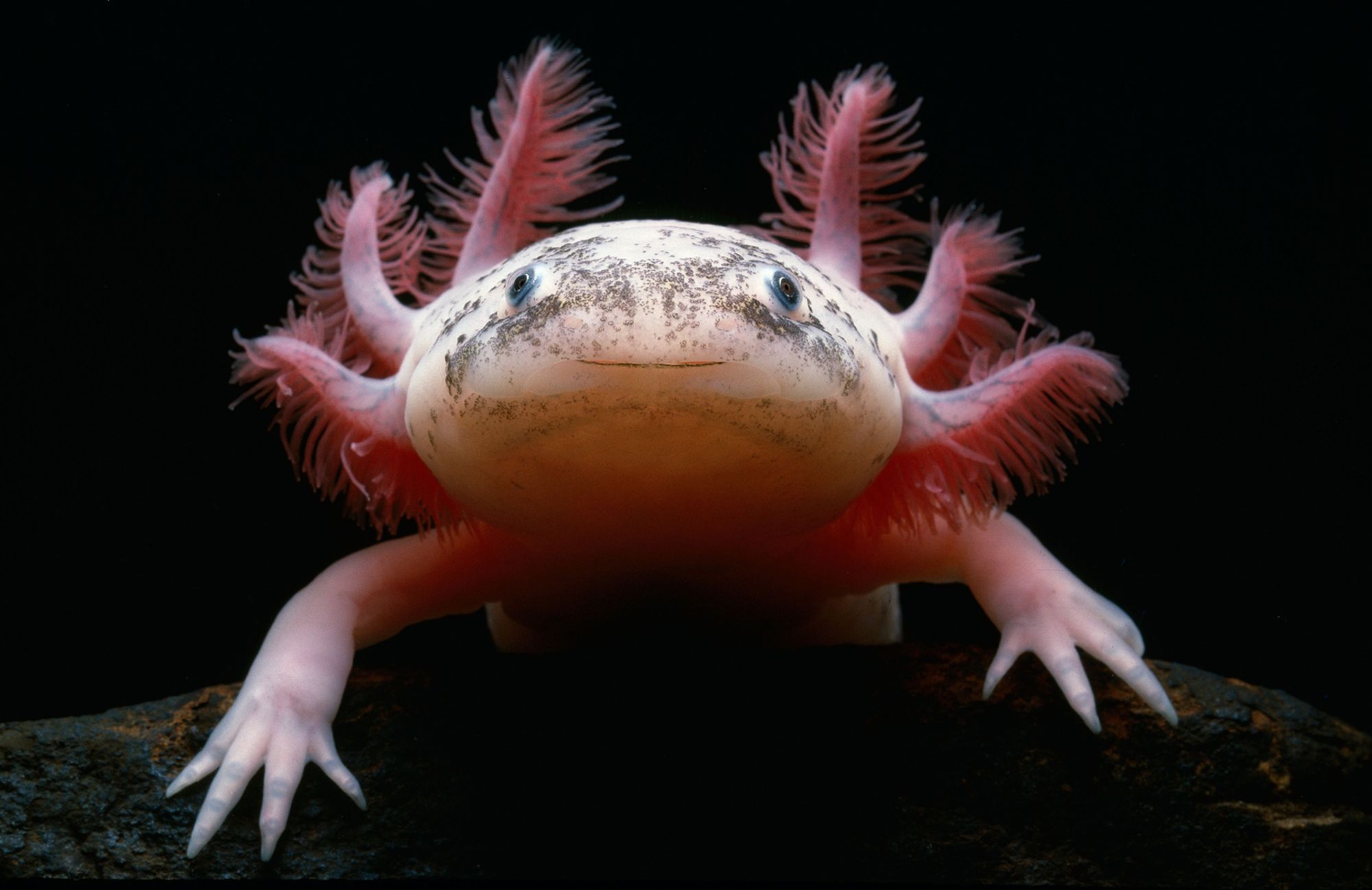
Ever wondered about the mysterious creatures that seem to smile back at you from behind the glass of an aquarium? Yes, I'm talking about axolotls, those quirky amphibians that have taken the internet by storm. But what makes them so fascinating, and why are they popping up on your feed more than ever? Axolotls are not just any ordinary pet; they're a bundle of surprises wrapped in a cute, aquatic package. From their unique ability to regenerate lost body parts to their status as a critically endangered species, there's a lot more to these creatures than meets the eye. Ready to dive into the world of axolotls and uncover some mind-blowing facts you probably didn't know? Let's get started on this wild ride through the intriguing life of one of nature's most adorable anomalies.
Key Takeaways:
- Axolotls, also known as Mexican walking fish, are unique amphibians with regenerative abilities and diverse skin colors. They face threats in the wild but are crucial for research in regenerative medicine.
- Keeping axolotls as pets requires specific care, including a cool freshwater environment, proper filtration, and minimal handling. They also hold cultural significance in Aztec mythology and modern Mexican culture.
What is an Axolotl?
Axolotls, also known as Mexican walking fish, are not fish but rather amphibians. These fascinating creatures have piqued the interest of scientists and pet enthusiasts alike due to their unique features and behaviors.
-
Axolotls are native to the lake complex of Xochimilco near Mexico City. Unfortunately, their natural habitat is under threat, leading to their classification as critically endangered.
-
Unlike most amphibians, axolotls do not undergo metamorphosis from larva to adult and instead retain their gills and aquatic lifestyle.
Unique Features of Axolotls
Axolotls possess several unique features that distinguish them from other amphibians.
-
They can regenerate lost body parts, including limbs, heart, and even parts of their brain, making them a subject of extensive scientific research.
-
Axolotls have a wide range of skin colors, from wild-type greenish-brown to leucistic (pale pink), albino, golden, and even black.
-
These creatures have external gills, which look like feathery appendages on either side of their heads, allowing them to breathe underwater.
Axolotl Diet and Feeding Habits
Understanding what axolotls eat is crucial for those who keep them as pets or study them in research settings.
-
In the wild, axolotls are carnivorous, feeding on small fish, worms, and insects. In captivity, they can be fed a variety of foods, including specially formulated pellets, frozen or live bloodworms, and earthworms.
-
Axolotls have a unique way of eating; they suck in their food through their mouths by creating a vacuum, swallowing their prey whole.
Reproduction and Lifespan
The reproduction process and lifespan of axolotls offer more insight into their fascinating biology.
-
Axolotls reach sexual maturity at about 18 months of age. They reproduce by external fertilization, where the female lays eggs and the male fertilizes them outside of the female's body.
-
Under optimal conditions, axolotls can live up to 15 years in captivity, though the average lifespan is around 10 years.
Conservation Status and Efforts
The conservation status of axolotls highlights the challenges they face in the wild.
-
Axolotls are listed as critically endangered by the International Union for Conservation of Nature (IUCN) due to habitat loss, pollution, and introduction of invasive species.
-
Conservation efforts include habitat restoration and captive breeding programs aimed at increasing the axolotl population and reintroducing them into their natural habitat.
Axolotls in Research and Medicine
Axolotls hold a special place in research and medicine due to their regenerative abilities.
-
Scientists study axolotls to understand the mechanisms behind their regenerative powers, which could have implications for regenerative medicine and treatments for human injuries and diseases.
-
Their genome has been sequenced, revealing insights into their unique biology and potential applications in medical research.
Axolotls as Pets
Keeping axolotls as pets has become increasingly popular, but it requires specific care.
-
Axolotls need a cool, freshwater aquarium with a temperature between 60-64°F (16-18°C) to thrive.
-
They are sensitive to water quality and require a filtration system to keep their environment clean and oxygen-rich.
-
Pet owners should avoid handling axolotls too much, as their delicate skin can be easily damaged.
Cultural Significance
Axolotls are not just fascinating biological specimens; they also hold cultural significance.
-
In Aztec mythology, the axolotl is associated with the god Xolotl, who is the twin brother of Quetzalcoatl and represents fire and lightning.
-
Today, axolotls are recognized as a symbol of Mexico City and its natural heritage, featuring in art, literature, and popular culture.
Challenges in Axolotl Research
Despite their popularity in research, studying axolotls presents certain challenges.
A Glimpse into the Axolotl's Enigmatic World
Axolotls, with their unique regenerative abilities and perpetual juvenile state, have captivated scientists and animal lovers alike. These fascinating creatures, native to the lakes of Mexico, are more than just an oddity in the animal kingdom; they're a window into evolutionary biology and medical research. Their ability to regrow limbs, spinal cord, and even parts of their brain holds promise for scientific breakthroughs. Yet, their existence is under threat due to habitat loss and pollution. Efforts to conserve their natural environment are crucial for their survival and the continuation of research that could one day revolutionize regenerative medicine. Axolotls aren't just quirky pets; they're ambassadors for conservation and scientific curiosity. Let's cherish and protect these remarkable creatures, ensuring they continue to thrive both in the wild and in our hearts.
Frequently Asked Questions
Was this page helpful?
Our commitment to delivering trustworthy and engaging content is at the heart of what we do. Each fact on our site is contributed by real users like you, bringing a wealth of diverse insights and information. To ensure the highest standards of accuracy and reliability, our dedicated editors meticulously review each submission. This process guarantees that the facts we share are not only fascinating but also credible. Trust in our commitment to quality and authenticity as you explore and learn with us.


